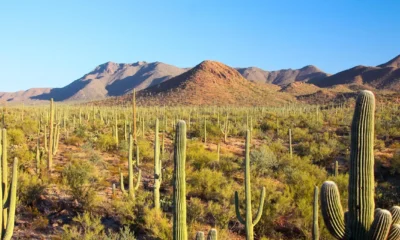Entertainment
Discover Why Maricopa is the Ultimate Destination for the 2025 Meteor Shower Premiere
![A meteor from the 2020 Quadrantids meteor shower flies across the night sky. [Mike Lewinski]](https://arizonanews.org/wp-content/uploads/2025/01/Discover-Why-Maricopa-is-the-Ultimate-Destination-for-the-2025.jpg)
The Quadrantids meteor shower is set to peak this weekend, providing a stellar alternative for those who prefer a quieter New Year’s celebration. While fireworks may set off the traditional holiday noise, nature’s light display is ready to steal the show on Friday night into Saturday morning.
Maricopa, a city located just south of Phoenix, is anticipated to be one of the best viewing locations in the region, away from the distractions of urban light pollution. The Quadrantids, one of the most impressive meteor showers of the year, began on December 12 and will continue until January 12.
According to NASA, the ideal time for viewing can yield up to 200 meteors per hour. This peak occurs as Earth traverses the densest segment of the meteor shower in its orbit. For optimal viewing conditions, experts recommend finding a spot away from city lights and gazing northeast.
While the city itself may not be ideal, nearby exurbs like Maricopa, Queen Creek, or Buckeye present better options. With Maricopa being approximately 15 miles from downtown Phoenix, even this short distance results in a noticeable darkening of the sky compared to suburban areas.
On Friday night, conditions may be favorable for viewing as the moon sets early at 9:43 p.m., minimizing interference from its brightness. The forecast from the National Weather Service calls for a predominantly cloudy night with temperatures dropping to around 43 degrees, accompanied by calm winds.
For those who miss the peak night, the spectacle is not over yet. Saturday and Sunday nights promise clearer skies, though temperatures will dip further, ranging from 36 to 38 degrees. Observers should prepare for chilly weather to make the most of the experience.
Looking ahead, those eager for more astronomical events can mark their calendars for the Lyrids meteor shower, which peaks on April 22.


















